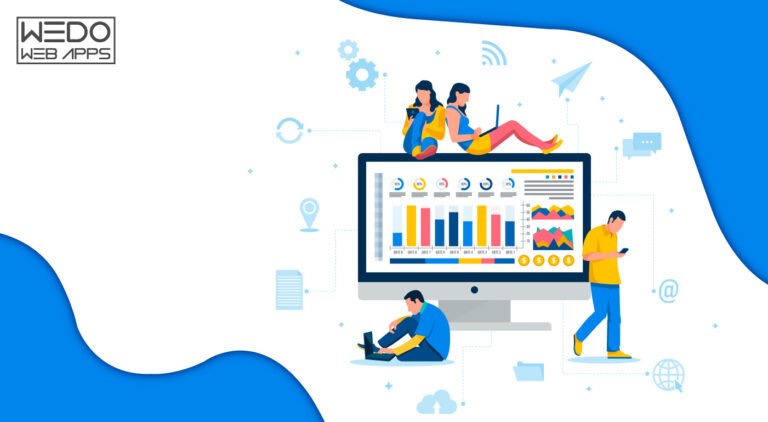11 Jul, 2022 | Website Design Company
Top 7 Real-time Monitoring Tools That Every Online Website Design Company Deploys

- StatusCake: StatusCake is available for free as well as in the paid version. With all the crucial features it is serving well in 60+ monitoring locations. You can count on unlimited monitors and advanced features like SSL monitoring, page speed testing and constant check rates by selecting the paid plans, else you will be getting 5 minutes checking rate with the free plan.
- Uptime Robot: Uptime Robot has been serving 12 different monitoring locations for over a decade now. It’s the choice of Expedia, Fandango, Nginx, and numerous others. They offer free as well as paid services. The free plan offers 50 monitorings in 5 intervals and added with two months of logs. Later, you can upgrade with their paid plan of $5.50month.
- Pingdom: The real-time monitoring tools that are used by renowned brands like Apple, Amazon, Dell, and Google; is a lot easier to trust. With the 60 + features and minute to minute details, you will not find a free plan here. But, the experience and reports you will have using the tool will not leave any doubts in your mind.
- New Relic: View, check, and analyze the real-time data and take actions according to the detailed reports by New Relic. They offer both free & paid services in 14 locations for checking within time intervals of 1 minute. In addition to the uptime checking, you will get benefited from features like API testing, chrome-based scripts, alerts, waterfall analysis, integration to tools like Slack, and so on.
- Monitis: Another compact monitoring tool that’s used by Visa, Puma, Seimens, etc. can help you with network management, custom monitoring, website, and application front management, all via a single dashboard. Deploying them for the long-term can help you get two years of historical archives and minute-to-minute interval checks. Dotcom-Monitor: Configure your website with a dotcom monitor and keep an eye on its health in real-time. If you have web applications and mobile apps development services, you can trust the on checking their performance as well. You will get access to performance counter, infrastructure monitoring, load testing, monitoring of web services like TCP/IP, SOAP, SSL, etc.
- StatusOK: It is an open-source, free-to-use website monitoring solution that can be self-hosted. You need to set up the monitoring tool on your website, and you will keep receiving notifications on your registered mail or via Slack if your website goes down. If you are trying to set up on your own, you can connect with other tech minds on GitHub to have your queries answered.
- Image optimization: While updating the images on your website, prefer updating the commonly accepted versions like .jpg, .png, .gif. The standard formats will keep you from the trouble of performance issues across different browsers. Scaling the images before uploading images & graphic elements can reduce the space that they will occupy on the web. Compressing the images can also serve the purpose. You can also count on the .webp version of the image to refine the loading time as well as space on the web.
- Removal of unnecessary elements: Once the website development is completed, you must remove all dummy elements from the backend, be it pages or media elements. If you like to keep the backup, you can download it and save it to some other location. Keeping all this clutter on the server will increase the load on the server and negatively impact the fetching speed of your site.
- Server optimization: Keep an eye on performance bottlenecks, like routing and database queries. Try switching hosts in case there happen to be any issues from the server’s end. This will resolve your concern about the requirement of site optimization is there, or it’s the maximum capacity of the server that’s diminishing performance of your website. Keep in mind that the optimal server response time is that of 200ms.
- Code minification: Compressing the code isn’t very possible, but, you can try compressing the files of HTML, CSS, and Javascript. Reducing this file size can improve the overall performance of your website; you can rely on minification tools for that. Remove the unnecessary comments in the code that you’ve posted for easy reference. And, move the scripts to the footer to avoid blocking javascript codes in rendering.
- Connect with CDN: Adding the Cloud Delivery Network (CDN) can help you fix the minor server issues. CDN will have the copied files of your website stored on the cloud, which will be fetched automatically from the servers when the site is accessed. This will reduce the delivery time and add more satisfied users who will love to explore your website.
Frequently Asked Questions
The most essential tool for real-time website monitoring is a website monitoring service. This type of service is equipped with features such as alert notification, server uptime and latency monitoring, SSL encryption monitoring, page speed monitoring, API monitoring and 3rd party monitoring. It is important to use a website monitoring service to be informed about website performance and detect any errors that may arise during website operations in order to improve customer experience and business operations.
Real-time monitoring tools provide invaluable insight into the usability, performance, and overall customer satisfaction of a website. These tools allow website designers to see in real-time what users are engaging with and what features they are struggling with. This not only allows designers to identify and debug any potential issues they may not have been aware of, but also to actively design and test new website elements to improve user interactivity and ultimately create better designs. By getting regular and up-to-date feedback on website usability, design, and customer satisfaction, designers are better equipped to ensure their website meet and exceed customer expectations.
One of the most common challenges encountered while using monitoring tools in website design is integrating the tool with the website itself. This is usually done through coding and requires a particularly high level of knowledge in programmatic languages such as HTML, JavaScript, and CSS. Another challenge is staying up to date with the latest trends in website design and making sure the monitoring tools are compatible with those trends. Finally, understanding the metrics that the tools provide and using them effectively to improve website performance can be difficult, particularly for beginners.
The initial investment in monitoring tools is often well worth it in the long run. Monitoring tools enable businesses to track and analyze performance metrics, generate insights and alerts, detect trends, and gain a much better understanding of customer behaviors. This, in turn, helps businesses optimize their processes, improve efficiency, and better serve their customers—all of which leads to increased sales, profits, and customer loyalty over time. So, yes, the initial investment in monitoring tools for your business can be well worth it in the long run.
The top 7 tools I find most applicable and effective depend on what business goals you have in mind. If customer retention is a priority, then things like a customer relationship management (CRM) platform and social media monitoring are industry-standard go-tos. If sales growth is a key goal, then marketing automation and a customer data platform are good to look into. If you're looking to streamline internal processes and communication, then project management and work tracking tools can be extremely useful. Lastly, analytics platforms can help you measure and analyze different elements of your business (e.g. customer behavior, sales performance, etc.) so you can better plan for the future.
The most important factor to consider when choosing a website monitoring tool is the compatibility of its features with your needs and those of the website you’ll be monitoring. For example, what kind of metrics need to be tracked (e.g. user experience, performance, availability, etc.), what time intervals should you monitor, and what kinds of alerts are available if something goes wrong. Additionally, look for websites monitoring tools that offer real-time data so you can quickly and easily make adjustments when necessary. Be sure to pay attention to the pricing and usability of the tools as well, as this can make or break the success of your website design project.

